| Columns Retired Columns & Blogs |
Rather expensive but at least it has HDMI inputs unlike most other modern DACs.
I measured the Lumin P1 with my Audio Precision SYS2722 system. Looking first at the digital inputs, the AES3 and coaxial and TosLink S/PDIF inputs accepted data sampled at all rates up to 192kHz. Apple's AudioMIDI utility revealed that the P1 accepted 16- and 32-bit integer data via USB sampled at all rates from 44.1kHz to 768kHz (footnote 1). Apple's USB Prober app identified the Lumin as "LUMIN" from "PMS" (Pixel Magic Systems, presumably), and the USB port operated in the optimal isochronous asynchronous mode.
The Lumin's analog outputs with the Invert Phase control set to Off preserved absolute polarity (ie, were noninverting) via all of the P1's digital inputs. The maximum output with full-scale 1kHz data and the Gain set to High was 2.95V from the P1's single-ended analog outputs and 5.89V from the balanced outputs. Setting the Gain to Low gave maximum output levels of 987.4mV single-ended and 1.974V balanced. The balanced output impedance was a usefully low 37 ohms from 20Hz to 20kHz. The single-ended output impedance was an even lower 30.1 ohms, again at all audio frequencies.
Fig.1 shows the P1's impulse response with 44.1kHz data. It is a very short linear-phase reconstruction filter, with a small amount of ringing on both sides of the single full-scale sample. With 44.1kHz white-noise data, the filter rolled off slowly above the audioband (fig.2, magenta and red traces), not reaching full stop-band attenuation until 28kHz. Consequently, the aliased image at 25kHz of a full-scale tone at 19.1kHz (cyan, blue) is suppressed by only 27dB. The harmonics associated with the 19.1kHz tone are all very low in level.
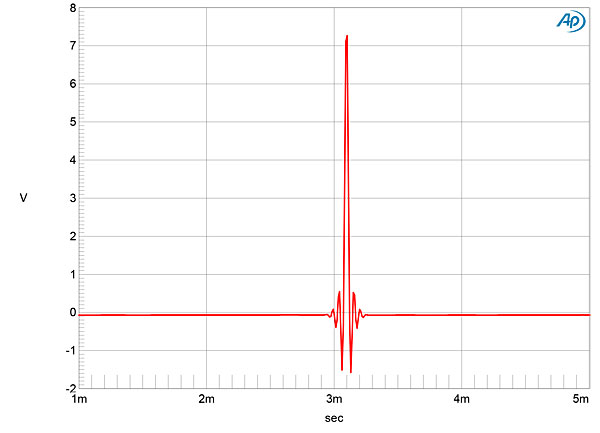
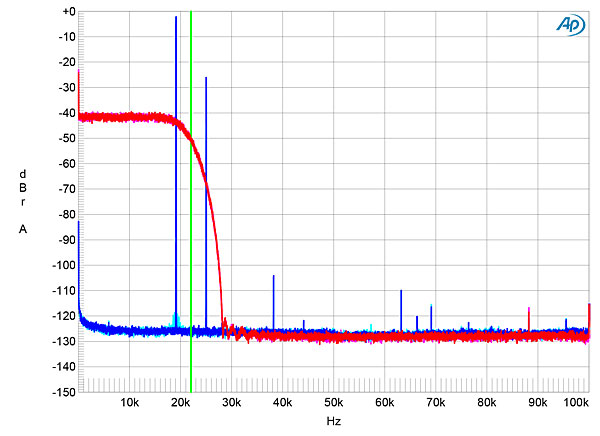
Fig.3 shows the Lumin's frequency response with data sampled at 44.1, 96, and 192kHz. The responses are all flat to almost half the sample rate with then the beginning of the ultrasonic rolloff. Channel separation (not shown) was superb, at >125dB in both directions below 1kHz. It decreased to a still-excellent 113dB at the top of the audioband. The low-frequency noisefloor (fig.4) was free from any power supply–related spuriae. This graph was taken with TosLink data; the spectrum with network-sourced data was identical.
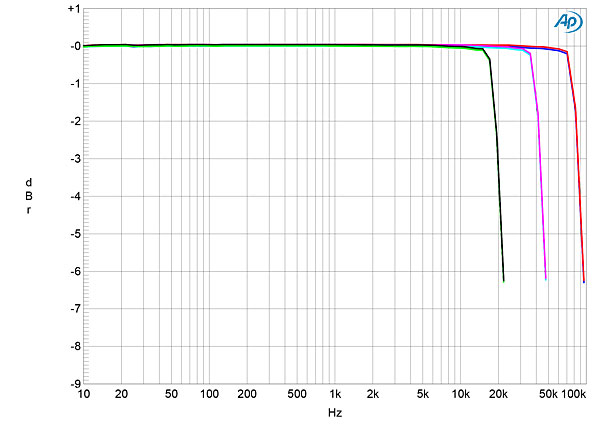
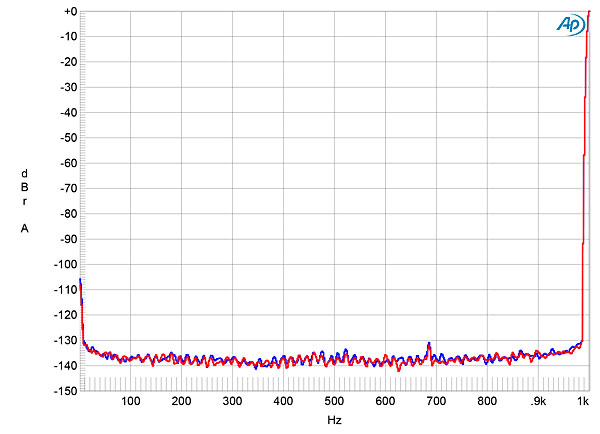
The red trace in fig.5 plots the error in the analog output level as a 24-bit, 1kHz digital tone drops from 0dBFS to –140dBFS. The amplitude error is negligible until the signal lies below –120dBFS, which implies high resolution. An increase in bit depth from 16 to 24 with dithered data representing a 1kHz tone at –90dBFS (fig.6) dropped the P1's noisefloor by almost 20dB, which implies a resolution of better than 19 bits. When I played undithered data representing a tone at exactly –90.31dBFS, the waveform was symmetrical, though the three DC voltage levels described by the data were overlaid with some high-frequency noise (fig.7). Repeating the measurement with undithered 24-bit data gave a well-formed sinewave (fig.8), but some high-frequency noise was still present.
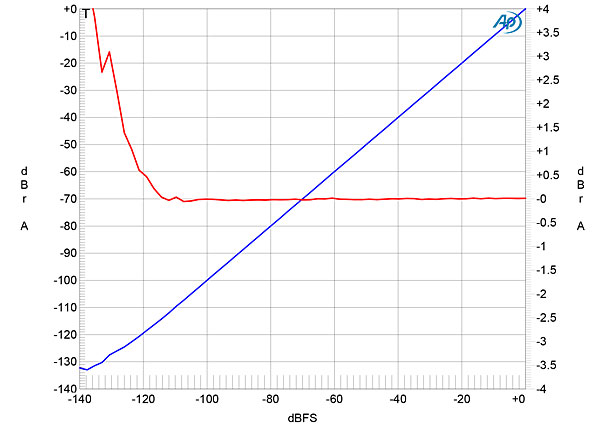
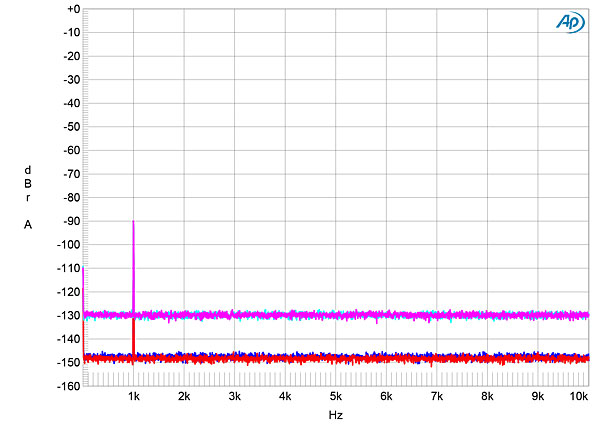
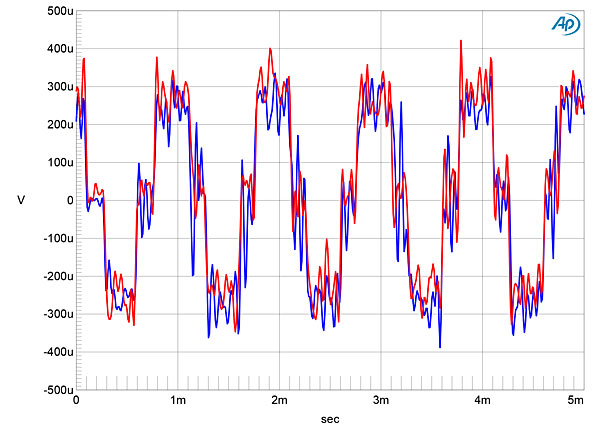
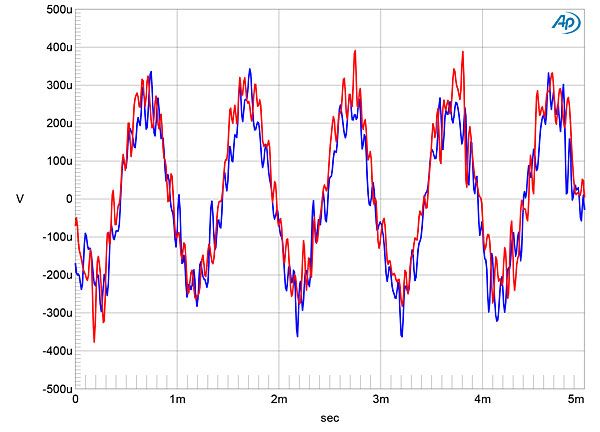
The P1 produced very low levels of harmonic distortion. With a full-scale 50Hz tone, the third harmonic was the highest in level in the balanced outputs at just –100dB (0.001%, fig.9). This spectrum was taken into the high 100k ohms load. When I reduced the load impedance to the punishing 600 ohms, the levels of the harmonic didn't change, a tribute to the quality of the Lundahl output transformers. With the unbalanced output driving 100k ohms, the third harmonic with the 50Hz tone rose to –90dB (0.003%), but this is still negligible. Repeating the spectral analysis with a 1kHz tone at 0dBFS, the third harmonic in the balanced output lay at just –119dB (0.0001%, fig.10). Intermodulation distortion with an equal mix of 19 and 20kHz tones, each lying at –6dBFS, was vanishingly low in level (fig.11), though the aliased images of the primary tones are present.
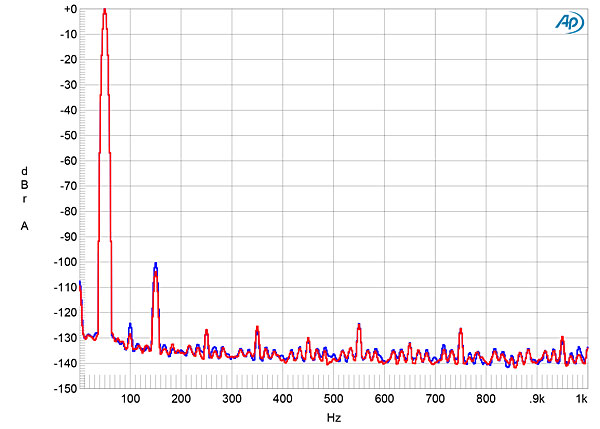
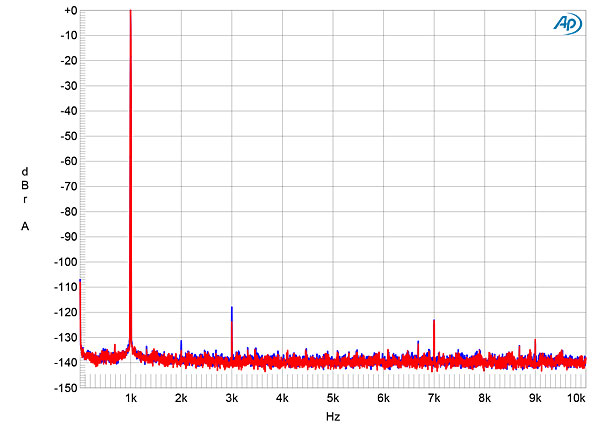
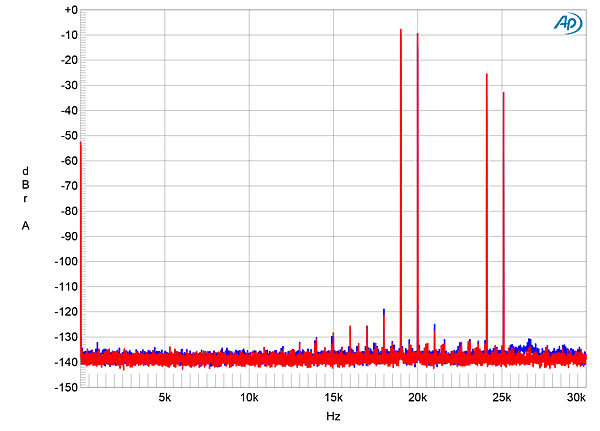
Fig.12 shows the spectrum of the P1's output when it was fed high-level, optical 16-bit J-Test data. The odd-order harmonics of the undithered low-frequency, LSB-level squarewave lie at the correct levels, indicated by the sloping green line. While some very low-level noisefloor modulation is visible around some of the sidebands, this should not have audible consequences. This behavior was not present with 24-bit J-Test data (fig.13), though a pair of sidebands at ±120Hz is visible in this graph. The spectrum in fig.13 was taken with network data; the AES3 and S/PDIF inputs behaved identically, though these supply-related sidebands were a little higher in level with USB data.
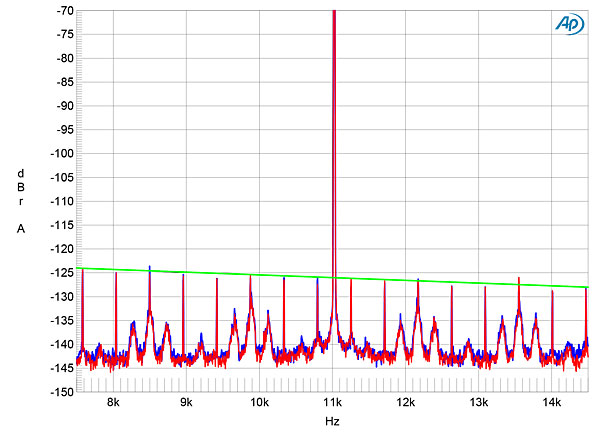
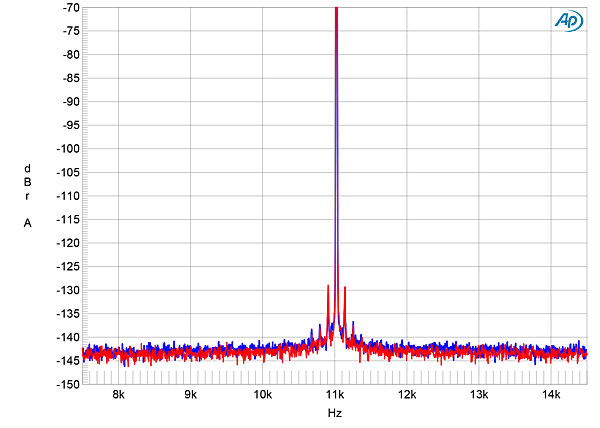
Turning to the Lumin's analog inputs, the input impedance was low, at 1240 ohms balanced and 1260 ohms unbalanced, which might be a problem with source components having tubed output stages. The maximum gain for balanced inputs and outputs was –0.13dB, ie, an input of 1V resulted in an output of 983mV. For single-ended inputs, the maximum gain was –0.43dB at the unbalanced outputs but 5.56dB at the balanced outputs. Both sets of analog outputs preserved absolute polarity with both types of analog input signals. The analog inputs offered a wide frequency response, with the output down by 3dB at 61kHz (fig.14). (This response was not affected by the sample rate of data present at the digital inputs.) The distortion via the analog inputs was slightly higher than via the digital inputs (fig.15) but was still very low in absolute terms.
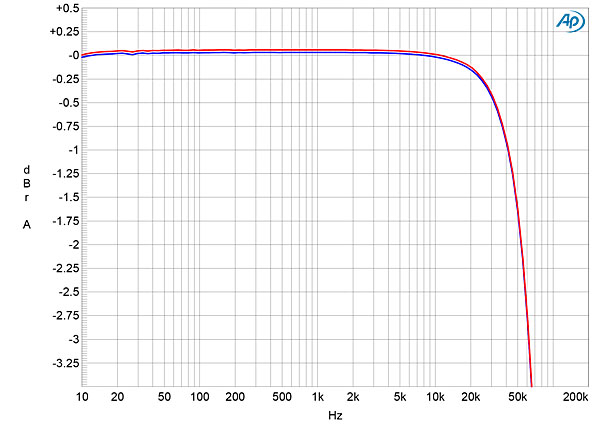
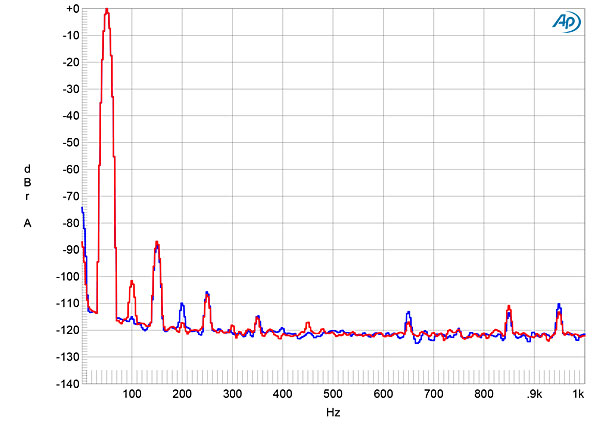
Lumin's P1 did very well on the test bench.—John Atkinson

I am disillusioned by some of the fancy and expensive equipment Stereophile reviews.
A $12.000 phono preamp with only 3 db overload margin...
A $10.000 streaming preamplifier with only 1.2 kOhm input impedance (really?)...
These are all very serious design flaws.
C'mon, your readers surely deserve better equipment, without getting ripped!

Hi
Any publishers need advertising sponsors to keep their journals running so the readers can read them. They are running a business not a charity.
So they would not & could not turn down any vendors' new components for review. This is their business 'law'.
Stereophile is a much better journal as it got a technical dept to provide its readers the bench measurement data vs the specs provided by the equipment manufacturers.
Yes, you are right: 1,240 - 1,260 ohm is rediculously way too low for any decently designed audio inputs. No wonder the Chinese manufacturer does not publish it. Who would spend 10 grands to buy such lousy design & built cheap in China ????????????
Jack L

So they would not & could not turn down any vendors' new components for review. This is their business 'law'.
We routinely choose not to review components offered to us for review, by advertisers and nonadvertisers alike. (There's no difference.) This should be obvious when you consider that far more components are released than that Stereophile reviews.
Jim Austin, Editor
Stereophile

Hi
I see. I stand corrected.
Jack L

Thanks John, beautifully engineered beyond a doubt, and I always look forward to your intriguing analyses of the sound quality. But on the topic of SQ, what about digital room correction? That's becoming a core component of a modern, transparent audio system. In comparison, a network streaming DAC with DSP takes SQ to a new level, eg the miniDSP SHD with Dirac 3 and much else at almost a tenth of the price. A paradigm change?

JA's measurements, but not his ears... huh.
Sounds like there is no trust.
His review is important; these comments above are not.
I would really love for JA to review the latest Wadax Network Streamer and its 'wave-shaping' controls for getting closer to a more perfect analog waveform. I think it might address some of his consternation regarding the AES3 and network streaming comparisons he brought up in the review.

Peter Wklie, Project Manger at Lumin, who seems to have the job or answering all enquiries about Lumin
on AudioShark: answered Why their might be sonic benefits of the L1 over the Nucleus.
He writes:
"Unlike a typical NAS, the L1 eliminates all non-essential network services, so there is less network traffic that is unrelated to music transfer, and the L1 itself will not be affected by background detection of network file (and other) services by computers. Since digital audio is heavily affected by timing jitter, I have always wondered whether this aspect of L1 can result in audio improvement, however minimal it may be."
I have both the L1 and the Nucleus with ssd drives and I do hear an improvement of the L1, wether playing files or streaming from Roon. However it's minor and not as easy as to detect the bump in quality as compared to playing anything from a computer.
The fact that Mr. Atkinson can hear a difference is no surprise.

you dont suppose you are actually tossing yourself when you listen to this thing or writing the review, and waiting for the advertising contract to be signed?

you dont suppose you are actually tossing yourself when you listen to this thing or writing the review...
No.
...and waiting for the advertising contract to be signed?
Sigh. Although I have the title of Technical Editor, I am a freelance contractor and have no connection with Stereophile's advertising department and no insider knowledge of which companies advertise. And even when I was the magazine's editor, there was no connection between advertising and editorial content. See this essay I wrote in 1996: www.stereophile.com/asweseeit/366/index.html. Editor Jim Austin practices the same policy.
John Atkinson
Technical Editor, Stereophile